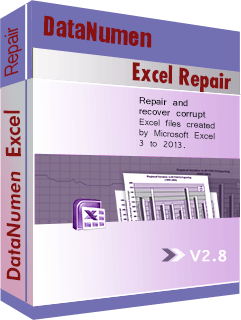The Best Strategy To Use For Excel Links Not Working
Table of ContentsSome Ideas on Excel Links Not Working You Should KnowThe Buzz on Excel Links Not WorkingThe Buzz on Excel Links Not WorkingThe Ultimate Guide To Excel Links Not WorkingThe Best Guide To Excel Links Not Working

Array computation functions like either can not deal with entire column referrals or compute all the cells in the column. User-defined features do not automatically recognize the last-used row in the column and, for that reason, often calculate whole column recommendations inefficiently. However, it is easy to program user-defined functions to ensure that they acknowledge the last-used row (excel links not working).

8 Simple Techniques For Excel Links Not Working
Utilizing the formula for a dynamic array is normally preferable to the formula since has the downside of being an unpredictable function that will certainly be determined at every recalculation. Efficiency decreases since the function inside the dynamic range formula should take a look at many rows.$A$ 1) - 1,1) You can likewise make use of functions such as to create vibrant arrays, however is volatile and also always calculates single-threaded.
Utilizing multiple dynamic arrays within a single column requires special-purpose counting functions. Using many dynamic arrays can decrease performance. In Workplace 365 variation 1809 as well as later, Excel's VLOOKUP, HLOOKUP, and MATCH for precise match on unsorted data is much faster than ever when seeking out multiple columns (or rows with HLOOKUP) from the exact same table variety.
If you use the exact suit choice, the calculation time for the function is proportional to the number of cells scanned prior to a suit is located. Lookup time using the approximate suit alternatives of,, as well as on arranged information is fast as well his comment is here as is not considerably enhanced by the length of the variety you are looking up.
Not known Details About Excel Links Not Working
Ensure that you recognize the match-type and also range-lookup options in,, and. The following code example reveals the phrase structure for the feature. SUIT(lookup worth, lookup range, matchtype) returns the largest match less than or equal to the lookup worth when the lookup array is sorted rising (approximate match).
The default alternative is approximate match arranged rising. The adhering to code instance reveals the syntax for the and features.
VLOOKUP(lookup value, table array, col index num, range-lookup) HLOOKUP(lookup website link worth, table selection, row index num, range-lookup) returns the largest suit less than or equivalent to the lookup value (approximate match). Table variety need to be arranged rising.
The 3-Minute Rule for Excel Links Not Working
If your data is sorted, but you desire an exact match, see Usage two lookups for arranged data with missing out on worths. Try making use of the as well as works rather than. Although is a little quicker (approximately 5 percent quicker), less complex, and also uses much less memory than a combination of as well as, or, the added versatility that as well as offer typically enables you to considerably conserve time.
The feature is rapid as well as is a non-volatile function, which speeds up recalculation. The function is additionally fast; however, it is a volatile function, as well as it in some cases considerably enhances the time taken to process the estimation chain.$A$ 2:$F$ 1000, MATCH(A1,$A$ 1:$A$ 1000,0),3) Due to the fact that exact match lookups can be slow, take into consideration the adhering to alternatives for improving performance: Use one worksheet.
When you can, the data initially (is fast), and make use of approximate match. When you should make use of an exact suit lookup, limit the variety of cells to be scanned to a minimum. Usage tables and structured references or vibrant array names instead than describing a lot of rows or columns.
Getting The Excel Links Not Working To Work
2 approximate matches are significantly faster than one precise match for a lookup over even more than a few rows. (The breakeven point is concerning 10-20 rows.) If you can arrange your information however still can not make use of approximate suit since you can not be sure that the worth you are searching for exists in the lookup range, you can use this formula: IF(VLOOKUP(lookup_val, lookup_array,1, Real)=lookup_val, _ VLOOKUP(lookup_val, lookup_array, column, Real), "notexist") The initial part of the formula functions by doing an approximate lookup on the lookup column itself.
VLOOKUP(lookup_val, lookup_array, column, Real) If the solution from the lookup column did not match the lookup value, you look at here now have an absent value, and the formula returns "notexist". Know that if you search for a worth smaller than the smallest value in the checklist, you receive a mistake. You can manage this error by utilizing, or by including a little examination worth to the checklist.
Beginning with Excel 2007, you can use the feature, which is both easy as well as rapid. IF IFERROR(VLOOKUP(lookupval, table, 2 FALSE),0) In earlier variations, a basic but slow means is to use a function which contains two lookups. IF(ISNA(VLOOKUP(lookupval, table,2, FALSE)),0, _ VLOOKUP(lookupval, table,2, FALSE)) You can stay clear of the double precise lookup if you utilize precise when, keep the cause a cell, and afterwards check the outcome before doing an.